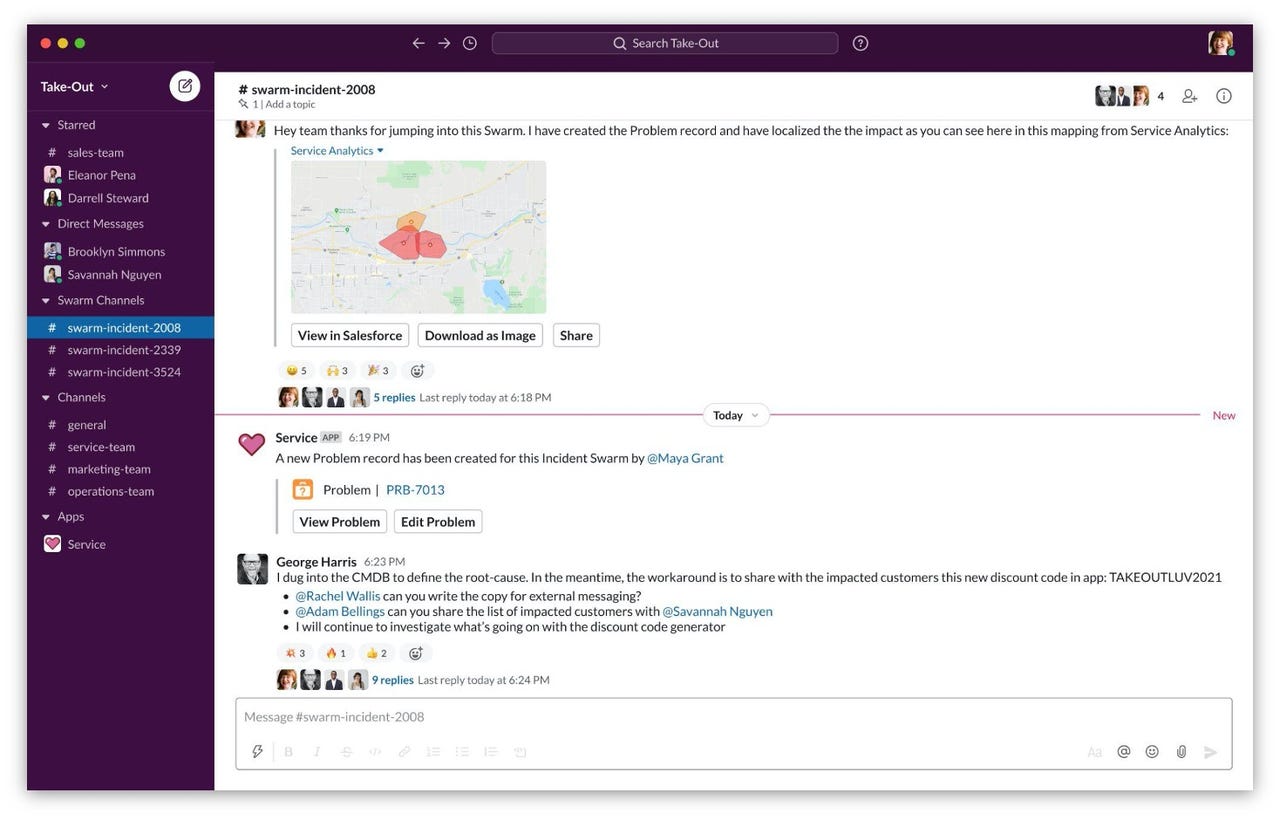Salesforce updates Service Cloud with Slack "swarming" and other new tools

Salesforce on Thursday introduced a series of new features and tools to Service Cloud, with the intent of streamlining experiences between customer service agents and consumers. Service Cloud is one of the Salesforce tools that now leverages Slack -- in this case, for a "swarming" capability that brings together all of the right experts to solve customer problems quickly.
The first batch of new capabilities, including Slack swarming, enable new workflows for faster, more efficient customer experiences. The Slack integration is part of Service Cloud's Customer Service Incident Management feature, which will be generally available in the Winter 2022. It's designed to help companies detect, diagnose, and respond to service disruptions. This lets service teams proactively notify customers of a problem and triage increases in cases. In addition to the Slack integration, the feature uses capabilities from third-party partners such as PagerDuty for AIOps and real-time service status updates.

The Slack "swarming" capability in Service Cloud brings together all of the right experts to quickly solve customer problems.
The new Omni-Channel Flow feature, built on Salesforce's workflow platform, should make it easier for service teams to create complex rules based on CRM data. This can help with routing cases, calls, messages and chats across the service team and other departments. The Omni-Channel Flow will be generally available in the Winter of 2022.
Service Cloud will also streamline workflows with new robotic process automation capabilities (RPA), based on Salesforce's recent Servicetrace acquisition. This can help teams automate repetitive tasks such as opening and closing support tickets or giving customers steps to take to resolve a common issue via a chatbot. This capability will be generally available in 2022.
The second batch of Service Cloud updates includes new features that create a more robust "digital contact center" for agents to leverage when helping customers.
A new Einstein Conversation Mining capability uses natural language processing (NLP) to identify the most common types of interactions with customers. This can help organizations make decisions, such as which use cases to prioritize for a service bot rollout.
A new Messaging for In-app & Web capability lets customers start a support conversation in one place, such as a mobile app or website, and pick it up later via another channel. Einstein Conversation Mining and the Messaging capability will be available in 2022.